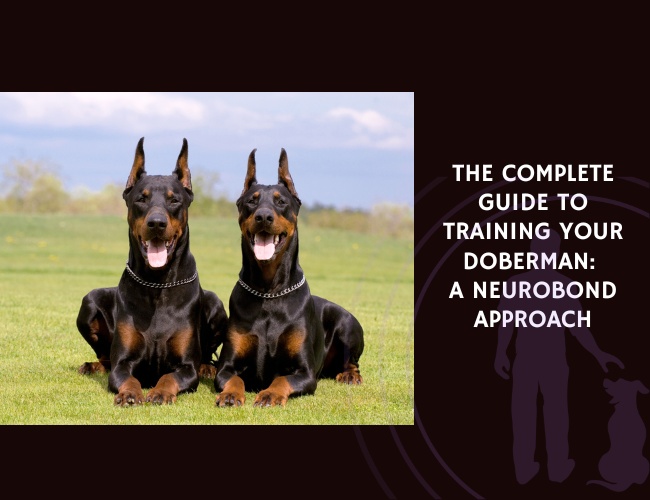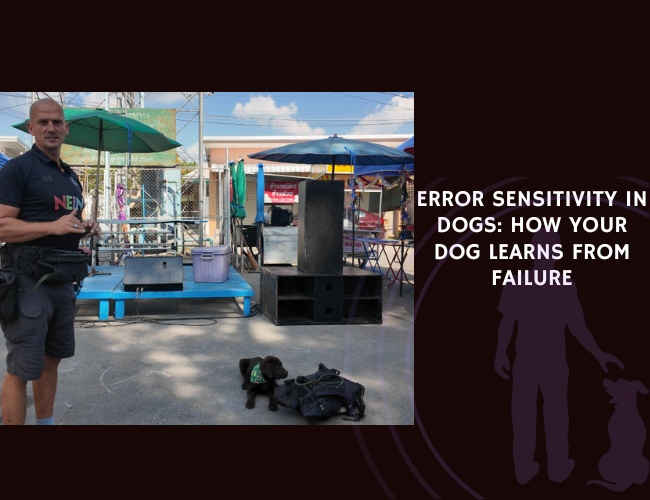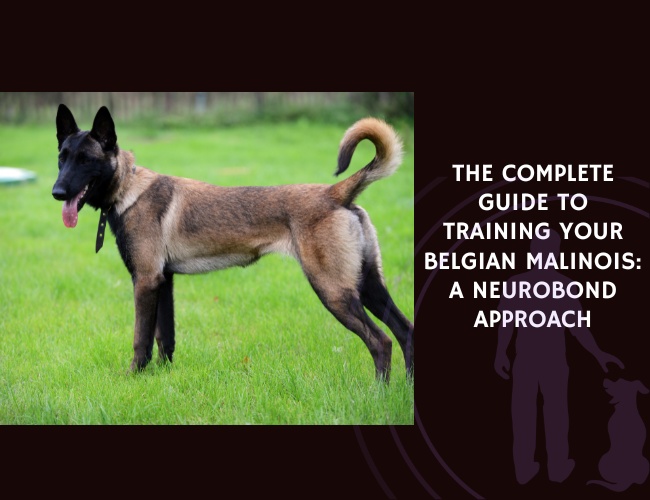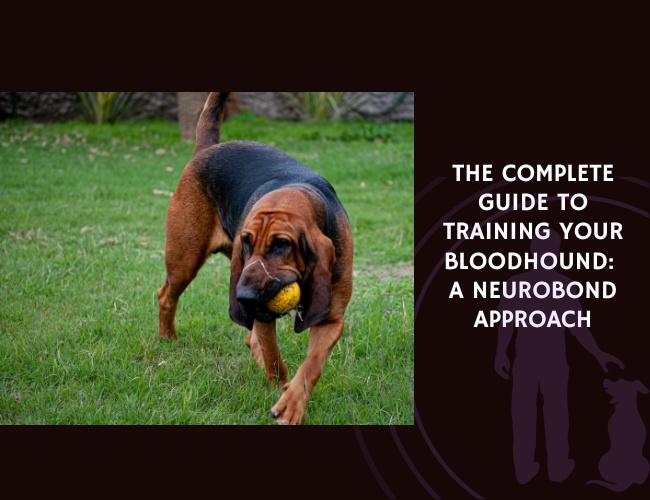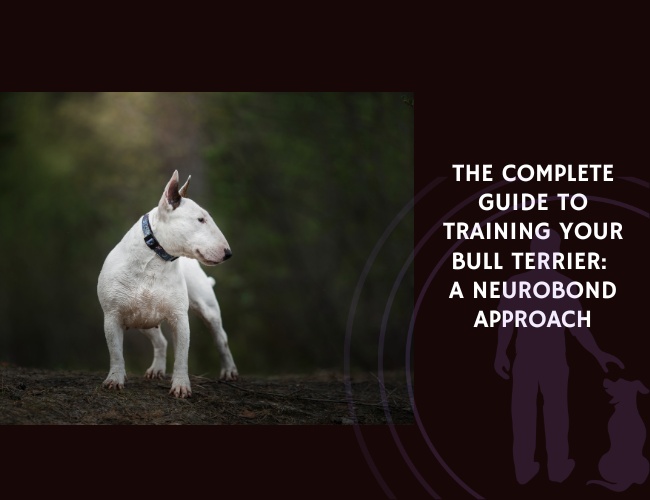Introduction
With their distinctive wrinkled skin and blue-black tongue, the Shar Pei stands as one of the most recognizable breeds in the canine world. These ancient Chinese dogs carry a legacy that spans over 2,000 years, from humble farm guardians to near extinction, and finally to their current status as devoted family companions. Let us guide you through the fascinating world of the Shar Pei, a breed that combines independence with loyalty in ways that continually surprise and delight their owners.
Did you know that the Shar Pei’s wrinkles once served as armor against predators? Today, these same wrinkles require dedicated care but contribute to the breed’s unique charm. Whether you’re drawn to their dignified bearing or intrigued by their complex personality, understanding the Shar Pei means appreciating a dog that defies simple categorization. They’re neither lap dogs nor social butterflies, but rather discerning companions who offer their loyalty selectively and completely.
Character & Behaviour
Independence vs. Social Attachment: The Shar Pei Paradox
The Shar Pei presents a fascinating study in contrasts when it comes to emotional attachment. These dogs are naturally aloof with strangers while forming deep, selective bonds with their primary caregivers. You might notice your Shar Pei maintaining a watchful distance from visitors while simultaneously positioning themselves to keep you in sight at all times. Their emotional expression within the household is subtle but profound – they show affection through quiet presence and gentle gestures rather than exuberant displays.
This breed’s independence shouldn’t be mistaken for indifference. Shar Peis experience profound emotional connections, they simply express them differently than more demonstrative breeds. You’ll find your Shar Pei communicating love through:
Subtle Affection Signals:
- Following you from room to room at a respectful distance
- Gentle leaning against your legs when you’re stationary
- Soft eye contact that speaks volumes
- Positioning themselves between you and perceived threats
- Quiet sighs of contentment when settled near you
Key Characteristics:
- Selective bonding: Forms strongest attachments to 1-2 primary caregivers
- Reserved nature: Not overtly affectionate with strangers or casual acquaintances
- Loyalty expression: Shows devotion through protective behaviors and constant companionship
- Independence: Can entertain themselves and don’t require constant attention
This emotional complexity means Shar Peis thrive with owners who appreciate subtle communication and respect their need for personal space while still providing consistent affection.
Protective Instinct and Suspicion of Strangers
Originally bred as palace guards and property protectors in ancient China, Shar Peis maintain strong territorial instincts that manifest in modern homes as natural watchdog behaviors. Their defensive aggression threshold is moderate to high, meaning they will typically warn before acting – a trait that responsible owners must understand and channel appropriately.
Understanding your Shar Pei’s protective escalation helps prevent problems before they develop. Early signs of reactivity include:
Progressive Warning Signals:
- Level 1: Stiffening body posture and alert stance
- Level 2: Fixed staring at the perceived threat
- Level 3: Low, rumbling growl from deep in the chest
- Level 4: Positioning themselves between owner and threat
- Level 5: Raised hackles along the spine
- Level 6: Warning bark or snap
Environmental Triggers:
- Unexpected visitors at the door
- Strangers approaching their family
- Unfamiliar dogs in their territory
- Sudden movements or loud noises
- People wearing unusual clothing (hats, uniforms)
Management Strategies:
- Early socialization (3-16 weeks critical period) – introduce at least 100 different people
- Controlled exposure to various people and situations
- Positive reinforcement for calm behavior around strangers
- Never force interactions – respect their comfort zone
- Teach a reliable “friend” command for welcomed guests
- Practice doorbell desensitization exercises
Remember that your Shar Pei’s protective nature is hardwired – your goal isn’t to eliminate it but to help them make appropriate decisions about when protection is needed.
Communication Style and Vocal Expression
Despite their wrinkled faces limiting some expressions, Shar Peis are remarkably effective communicators through a combination of body language, vocalizations, and subtle behavioral cues. Learning to read your Shar Pei’s unique communication style strengthens your bond and helps you respond appropriately to their needs.
Body Language Dictionary:
- Tail positions: High and curved over back (confident/alert); low but not tucked (relaxed); tucked tightly (anxious/fearful)
- Ear positioning: Forward and alert (interested/focused); pulled back against head (anxious/submissive); one forward, one back (uncertain)
- Overall body tension: Loose and flowing (relaxed); rigid and still (stressed/alert); trembling (fearful)
- Eye contact patterns: Soft eyes with slow blinks (affection); hard stare (warning); avoidance (stress or submission)
Vocalization Repertoire:
- Alert bark: Single, deep “woof” to announce visitors
- Warning growl: Low, sustained rumble when uncomfortable
- Contentment sounds: Soft grumbling or mumbling when happy
- Distress signals: Higher-pitched whines (rare in adults)
- Play sounds: Short, huffing barks during excitement
Shar Peis are generally quiet dogs, not prone to excessive barking. When they do vocalize, it’s purposeful and worth paying attention to. Their communication often relies more on positioning and body language than sound.
Early Environmental Sensitivity
The impact of early environmental enrichment on Shar Peis cannot be overstated. Research shows that puppies exposed to varied, positive experiences during their critical socialization period (3-16 weeks) develop significantly different personalities than those raised in limited environments.
Critical Period Development:
- Weeks 3-5: Basic sensory development and littermate interaction
- Weeks 6-8: Human bonding window opens
- Weeks 9-12: Peak socialization opportunity
- Weeks 13-16: Fear period requiring gentle exposure
Enrichment Benefits Include:
- Lower stress thresholds in adult life
- Better novelty response to new situations
- Reduced social fear and aggression
- More stable temperaments overall
- Enhanced problem-solving abilities
- Greater confidence in varied environments
Enrichment Recommendations:
- Textures: Carpet, tile, grass, gravel, sand, wood
- Sounds: Music, traffic, appliances, children, other animals
- Handling: Gentle restraint, paw touching, ear checks, teeth examination
- Environments: Car rides, different rooms, outdoors, friend’s homes
- Social exposure: Various ages, ethnicities, clothing styles, mobility aids
The Shar Pei puppy who experiences rich, positive early environments develops into a more adaptable, confident adult dog.
Breed-Specific Temperament Spectrum
There are notable temperament differences between the two main Shar Pei variations, each suited to different lifestyles and owner preferences:
Bone-mouth (Traditional) Shar Pei:
- More primitive temperament with stronger working instincts
- Higher independence and self-sufficiency
- Stronger hunting instincts and prey drive
- More athletic and active, requiring more exercise
- Less prone to stranger aggression but more aloof
- Better heat tolerance due to less excessive wrinkling
- Generally healthier with fewer breed-specific issues
- Preferred by those seeking a more “original” temperament
Meat-mouth (Western) Shar Pei:
- More docile and calm in household settings
- Better suited to family life with children
- More prone to health issues due to excessive wrinkling
- Lower exercise requirements and activity levels
- May show more protective tendencies toward family
- More popular as companion animals in Western countries
- Requires more intensive grooming and health management
- Often more affectionate with family members
Understanding these variations helps match the right Shar Pei type to your lifestyle and experience level 🐾
Training & Education
Autonomous Learning vs. Handler Reliance
Shar Peis are independent thinkers who approach training with a “what’s in it for me?” attitude. Unlike breeds that constantly seek handler approval, Shar Peis need to understand the purpose and benefit behind commands. This isn’t stubbornness – it’s intelligence combined with an independent heritage that required them to make decisions without human input.
Understanding Shar Pei Learning Style:
- Process information internally before responding
- May appear to ignore commands while actually considering them
- Once convinced, remarkably consistent in behavior
- Prefer to problem-solve independently
- Respond poorly to repetitive drilling
- Excel when allowed to think through challenges
Optimal Training Approach:
- Trust-building first: Establish relationship before demanding compliance
- Clarity of leadership: Consistent, fair rules without harshness
- Motivation matters: Find what drives your individual dog (food, play, praise)
- Short sessions: 5-15 minutes maximum to maintain engagement
- Patience with stubbornness: Never engage in power struggles
- Variety in training: Change locations, rewards, and challenges
The key to success lies in making training feel like a collaborative effort rather than a dictatorship. When your Shar Pei understands that working with you benefits them, they become remarkably willing partners.
Early Socialisation and Desensitisation Needs
Critical socialization for Shar Peis cannot be rushed or overlooked. Their natural aloofness and protective instincts require careful, systematic exposure to prevent fear-based aggression or excessive shyness.
Critical Socialization Timeline:
- 3-7 weeks: Primary socialization with littermates and mother
- 7-16 weeks: Critical human socialization window – most important period
- 4-6 months: Secondary fear period – careful management needed
- 6-12 months: Adolescent socialization reinforcement
- 12-18 months: Social maturity – personality solidifies
Comprehensive Socialization Protocol:
People Exposure (Aim for 100+ individuals):
- Various ages from infants to elderly
- Different ethnicities and appearances
- People wearing hats, sunglasses, uniforms
- Individuals using mobility aids
- Delivery persons and service workers
- Children of various ages and energy levels
Environmental Exposure:
- Urban environments: traffic, crowds, noise
- Various flooring surfaces
- Elevators and stairs
- Veterinary office positive visits
- Car rides to positive destinations
- Different weather conditions
Quality Over Quantity Approach:
- Start with calm, controlled environments
- Gradually increase complexity of experiences
- Always pair new experiences with positive outcomes
- Watch for stress signals and respect limits
- Never flood or overwhelm
- End on positive notes
Impact of Aversive vs. Reward-Based Training
Research specifically on Shar Peis shows dramatic differences in training outcomes based on methodology:
Positive Reinforcement Results:
- 75% faster learning of new behaviors
- Stronger human-dog bond measurements
- Reduced aggression incidents by 68%
- Better generalization of learned behaviors
- Lower stress indicators (cortisol levels)
- Enhanced problem-solving abilities
- Greater willingness to try new behaviors
Aversive Method Risks (Particularly Problematic for Shar Peis):
- Increased aggression (particularly toward handlers)
- Breakdown of trust – difficult to rebuild with this breed
- Slower learning and poor retention
- Higher anxiety levels affecting health
- Potential for redirected aggression
- Shutdown behaviors (refusing to engage)
- Exacerbation of natural aloofness
Why Positive Methods Work Best for Shar Peis:
- Respects their independent nature
- Builds rather than demands trust
- Allows them to choose cooperation
- Reduces stress-related health issues
- Creates confident, stable dogs
- Maintains their dignity

Recall, Impulse Control, and Environmental Response
Building reliable behaviors in Shar Peis requires understanding their independent nature and working with it rather than against it.
Recall Training Challenges:
- Natural independence makes recall difficult
- Strong prey drive can override commands
- Selective hearing when distracted
- May not be reliable off-leash in open areas
- Need extremely high-value motivation
Effective Recall Building:
- Start indoors with no distractions
- Use exceptional rewards (not regular meals)
- Practice “check-ins” on long line
- Never call for negative experiences
- Build value in proximity to you
- Accept that 100% recall may never be achieved
Impulse Control Exercises:
- “Wait” at thresholds: Doors, car, crate
- Food manners: No snatching or begging
- “Leave it”: From dropped food to interesting smells
- Settle on mat: Relaxation on cue
- Controlled greetings: Four feet on floor rule
Generalization Timeline (Realistic Expectations):
- Indoor mastery: 2-4 weeks
- Backyard success: 4-8 weeks
- Public spaces: 3-6 months
- High distraction environments: 6-12 months
- Off-leash reliability: Often never achieved safely
Cognitive Enrichment Strategies
Shar Peis require mental stimulation that respects their independent problem-solving nature while building engagement with their handlers.
Breed-Specific Enrichment Recommendations:
Scent Games (Excellent for Independent Workers):
- Hide treats in wrinkle-safe locations
- Snuffle mats for meal times
- Tracking games in the yard
- Scent discrimination exercises
- Find it games with favorite toys
Problem-Solving Activities:
- Puzzle feeders (start simple, increase difficulty)
- Interactive toys that dispense rewards
- Training new tricks monthly
- Food-dispensing toys for alone time
- DIY puzzles from household items
Mental Challenges That Build Cooperation:
- Shaping games (letting them figure out what you want)
- Targeting exercises
- Platform training
- Casual trick training during daily life
- Choice-based training games
Daily Mental Exercise Schedule:
- Morning: 10-minute training session
- Midday: Puzzle feeder for lunch
- Afternoon: Scent game or hide-and-seek
- Evening: Trick practice or shaping game
- Throughout: Environmental enrichment
Remember: A mentally stimulated Shar Pei is more likely to be a cooperative training partner 🧡
Nutritional Recommendations
Allergen Sensitivity and Immune Modulation
Shar Peis have one of the highest rates of food allergies among dog breeds, with studies suggesting up to 30% may develop food sensitivities. This predisposition links directly to their unique genetic makeup and tendency toward inflammatory conditions.
Primary Allergens (In Order of Frequency):
- Beef: Affects approximately 34% of allergic Shar Peis
- Chicken: Problematic for 28% of affected dogs
- Dairy products: Issues in 23% of cases
- Wheat: Triggers reactions in 18%
- Soy: Affects 13% of sensitive dogs
- Corn: Problematic for 10%
Allergy Manifestations:
- Skin inflammation and itching
- Recurrent ear infections
- Gastrointestinal upset
- Paw licking and chewing
- Face rubbing
- Secondary skin infections
Dietary Management Protocol:
- Select novel protein (venison, kangaroo, rabbit)
- Single carbohydrate source (sweet potato, pumpkin)
- Strict 8-12 week trial period
- No treats, table scraps, or flavored medications
- Gradual reintroduction to identify triggers
- Maintain detailed food diary
Alternative Approaches:
- Hydrolyzed protein formulas for severe cases
- Limited ingredient diets (5 ingredients or less)
- Raw feeding (with veterinary guidance)
- Home-cooked diets (properly balanced)
Anti-inflammatory Support:
- Omega-3 fatty acids (EPA/DHA): 20-30mg per pound daily
- Antioxidants: Vitamins E and C
- Probiotics: Multi-strain formulas for gut health
- Natural anti-inflammatories: Turmeric (½ teaspoon per 10 pounds), ginger (with vet approval)
- Quercetin: Natural antihistamine properties
Nutritional Strategies for Skin and Coat Health
Given their skin fold susceptibility and tendency toward dermatitis, nutritional support for skin health is crucial for Shar Peis:
Essential Nutrients for Skin Health:
- Omega-3s: 1000-1500mg daily for adult dogs
- Omega-6s: Proper 5:1 to 10:1 ratio with omega-3s
- Sources: Fish oil, krill oil, algae-based supplements
- Benefits: Reduced inflammation, improved skin barrier
Vitamins and Minerals:
- Zinc: 1-2mg per pound of body weight (critical for Shar Peis)
- Vitamin E: 1-2 IU per pound of body weight
- Biotin: Supports skin barrier function
- Vitamin A: Essential for skin cell turnover
- Copper: Works synergistically with zinc
Protein Quality:
- High biological value proteins
- Adequate amino acid profiles
- Consider novel proteins for sensitive dogs
- Avoid by-product meals
Food Sources for Skin Health:
- Salmon, sardines, anchovies (omega-3s)
- Flaxseed oil (plant-based omega-3s)
- Sweet potatoes (vitamin A)
- Eggs (biotin and protein)
- Pumpkin seeds (zinc)
Digestive Sensitivity and Stool Consistency
Shar Peis commonly experience digestive sensitivities that require careful dietary management:
Common Digestive Issues:
- Sensitive stomachs
- Food intolerances
- Inflammatory bowel disease
- Intermittent loose stools
- Gas and bloating
Digestive Support Protocol:
Fiber Management:
- Crude fiber: 2-4% optimal
- Soluble vs insoluble fiber balance
- Sources: Pumpkin, psyllium, beet pulp
- Gradual introduction essential
- Multi-strain formulas recommended
- Minimum 1 billion CFU per day
- Strains: Lactobacillus, Bifidobacterium, Enterococcus
- Consider soil-based probiotics
Digestive Aids:
- Digestive enzymes for seniors
- Prebiotics (FOS, MOS, inulin)
- Slippery elm for soothing
- Bone broth for gut healing
Feeding Management:
- Consistent meal times
- Room temperature food
- Adequate water intake
- Slow feeder bowls
- Avoid exercise immediately after meals

Breed-Specific Macronutrient Balancing
Shar Peis require careful macronutrient balancing to support their unique physiology while preventing obesity:
Recommended Macronutrient Ratios:
- Protein: 22-26% (moderate, not excessive)
- Fat: 12-15% (lower than many breeds)
- Carbohydrates: 35-45% from quality sources
- Moisture: Consider adding water to dry food
Why These Ratios Work:
- Moderate protein reduces kidney stress
- Lower fat helps prevent obesity
- Quality carbs provide steady energy
- Added moisture supports kidney health
Activity Level Adjustments:
- Sedentary/Senior: Lower end of protein/fat ranges
- Active adults: Moderate increases, monitor weight
- Working dogs: May need up to 18% fat
- Puppies: Higher protein (28%) for growth
Caloric Needs:
- Average adult: 25-30 calories per pound
- Seniors: 20-25 calories per pound
- Active dogs: 30-35 calories per pound
- Monitor body condition score monthly
Food Motivation and Obesity Risk
Understanding Shar Pei eating behaviors helps prevent obesity-related health issues:
Appetite Patterns:
- Generally good eaters but not gluttons
- Can become picky with age or illness
- Prone to weight gain if overfed
- Food motivation varies individually
- May eat out of boredom
Weight Management Strategies:
Portion Control:
- Feed 2 meals daily (prevents bloat)
- Measure portions precisely with cup or scale
- Adjust for treats (limit to 10% of daily calories)
- Account for training rewards
- Regular weight checks (weekly)
Body Condition Monitoring:
- Ribs easily felt but not visible
- Visible waist from above
- Abdominal tuck present
- No fat deposits over hips
- Adjust food within 5% weight change
Healthy Treat Options:
- Green beans (frozen for summer)
- Carrot sticks
- Apple slices (no seeds)
- Air-popped popcorn
- Ice cubes
Proper nutrition forms the foundation of your Shar Pei’s health and can significantly impact their quality of life 🐾
Diseases & Health Susceptibilities
Shar Pei Fever and Autoinflammatory Syndromes
Familial Shar Pei Fever (FSF) represents the most significant health challenge in the breed, affecting approximately 23-25% of Shar Peis. This autoinflammatory condition stems from the same genetic mutation that creates their characteristic wrinkled skin.
Understanding FSF:
- Genetic basis: Autosomal recessive inheritance linked to HAS2 gene
- Connection to wrinkles: Same mutation causing excessive hyaluronic acid
- Age of onset: Usually before 18 months, can occur any time
- Episode frequency: Varies from monthly to yearly
- Trigger factors: Stress, excitement, environmental changes
Clinical Presentation of FSF Episodes:
Primary Symptoms:
- Episodic fevers (103-107°F/39.4-41.7°C)
- Duration: 12-36 hours typically
- Self-limiting but recurrent
- May occur without warning
Associated Signs:
- Swollen hock syndrome (SHS): Affects ~53% of FSF cases
- Facial/muzzle swelling: Particularly around wrinkles
- Abdominal pain: Reluctance to move, hunched posture
- Lethargy: Profound weakness during episodes
- Joint pain: Beyond just hock swelling
- Vomiting or diarrhea: In some cases
Inflammatory Pathway Understanding:
- Excessive IL-6 and IL-1β production
- Elevated acute phase proteins
- Chronic inflammation between episodes
- Risk of amyloid A protein deposition
- Progressive kidney damage potential
Colchicine Protocol (Critical for FSF Management):
Standard Dosing:
- Starting dose: 0.025-0.03mg/kg twice daily
- Given with food to reduce GI upset
- Start immediately upon FSF diagnosis
- Continue lifelong without breaks
- Never stop abruptly
Managing Side Effects:
- Monitor for diarrhea (most common)
- Can reduce to once daily if needed
- May add fiber to diet
- Ensure adequate hydration
- Regular liver enzyme monitoring
Monitoring Requirements:
- Monthly: Temperature log, episode diary
- Quarterly: Physical exam, weight check
- Bi-annually: Complete blood count, chemistry panel
- Annually: Urinalysis for proteinuria, blood pressure
- As needed: Kidney function during episodes
Skin Infections and Fold-Related Conditions
The Shar Pei’s characteristic wrinkles, while endearing, create perfect environments for bacterial and fungal growth. Proper management is essential for comfort and health.
Common Skin Conditions:
Fold Pyoderma:
- Bacterial infection in skin folds
- Red, moist, malodorous areas
- Most common in facial folds
- Can progress to deep infection
- Requires aggressive treatment
Malassezia Dermatitis:
- Yeast overgrowth in moist areas
- Greasy, smelly discharge
- Intense itching
- Brown discoloration of skin
- Often secondary to allergies
Bacterial Infections:
- Usually Staphylococcus species
- Can form biofilms in chronic cases
- Resistance development common
- May require culture and sensitivity
Otitis Externa:
- Narrow ear canals predispose
- Chronic inflammation common
- May require surgical intervention
- Regular cleaning essential
Prevention Protocol:
Daily Care:
- Visual fold inspection
- Gentle cleaning of facial wrinkles
- Ensure complete drying
- Check for redness or odor
- Monitor for scratching
Weekly Maintenance:
- Deep clean all skin folds
- Use antimicrobial wipes 2-3x weekly
- Apply drying powder if needed
- Trim hair around folds
- Document any changes
Environmental Management:
- Maintain 30-50% humidity
- Use dehumidifiers in damp climates
- Ensure good air circulation
- Keep bedding clean and dry
- Avoid plastic food bowls
Treatment Approaches:
- Topical: Chlorhexidine, benzoyl peroxide washes
- Systemic: Antibiotics for deep infections
- Antifungal: Both topical and oral options
- Surgical: Fold reduction in extreme cases
- Maintenance: Ongoing prevention crucial
Amyloidosis and Systemic Organ Failure
Amyloidosis represents the most serious complication of FSF, occurring when chronic inflammation leads to abnormal protein deposits in organs.
Disease Understanding:
- Can occur with or without obvious FSF episodes
- Typically manifests at 2-5 years of age
- Primarily affects kidneys, sometimes liver
- Progressive and usually fatal once clinical
- Early detection crucial for management
Progression Stages:
Stage 1 – Pre-clinical:
- No outward signs
- Mild proteinuria on urinalysis
- Normal kidney values
- Treatable if caught early
Stage 2 – Early Clinical:
- Increased water consumption
- Mild weight loss
- Persistent proteinuria
- Slightly elevated kidney values
Stage 3 – Advanced:
- Obvious illness
- Poor appetite
- Vomiting
- Marked kidney value elevation
Diagnostic Markers:
- Urinalysis: Protein:creatinine ratio >0.5
- Blood work: Elevated BUN, creatinine
- Low albumin: From protein loss
- High cholesterol: Compensatory response
- Kidney biopsy: Definitive but risky
Management Strategies:
- Prevention: Early colchicine therapy crucial
- ACE inhibitors: For proteinuria reduction
- Diet modification: Controversial protein restriction
- Supportive care: Fluids, anti-nausea medication
- Quality of life: Honest assessments needed
Ocular and Entropion-Linked Disorders
Eye problems are extremely common in Shar Peis, with entropion affecting up to 35% of the breed.
Common Eye Conditions:
Entropion (In-rolling Eyelids):
- Present from birth or develops with growth
- Causes corneal irritation and ulcers
- May affect upper, lower, or both lids
- Often requires multiple surgeries
- Can lead to vision loss if untreated
Corneal Ulcers:
- Result from chronic irritation
- Painful, squinting, tearing
- Can perforate if severe
- Requires immediate treatment
- May need surgical repair
Other Ocular Issues:
- Cherry eye: 7% prevalence
- Glaucoma: 4.4% prevalence
- SARDS: Sudden blindness
- Cataracts: Age-related
- Dry eye: Secondary to medications
Surgical Considerations:
- Timing crucial for puppies
- May need “tacking” procedures
- Full correction after maturity
- Post-op care intensive
- Recurrence possible
Wrinkled. Watchful. Resolute.
Emotion hides in silence.
The Shar Pei does not chase your approval—but quietly orbits your presence. They don’t display affection; they anchor it. Their stillness is not absence, but awareness. To earn their trust is to earn a place beyond words.
Guarding is not aggression.
This breed doesn’t react impulsively—they evaluate, escalate, and then decide. Their protection is principled, not panicked. Understanding their signals isn’t optional—it’s essential if you want to coexist with their ancient code.
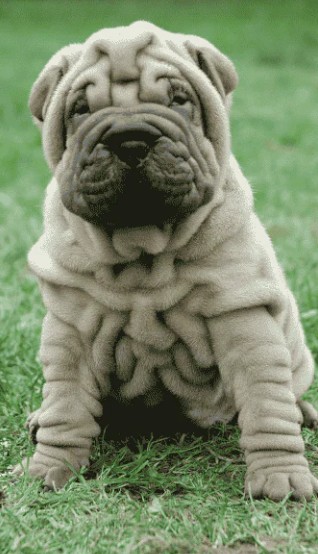
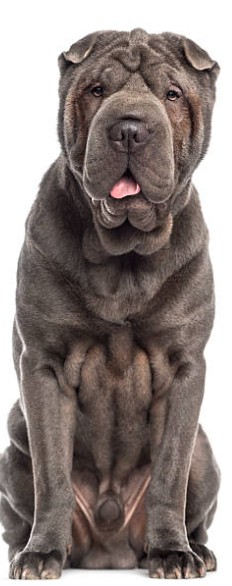
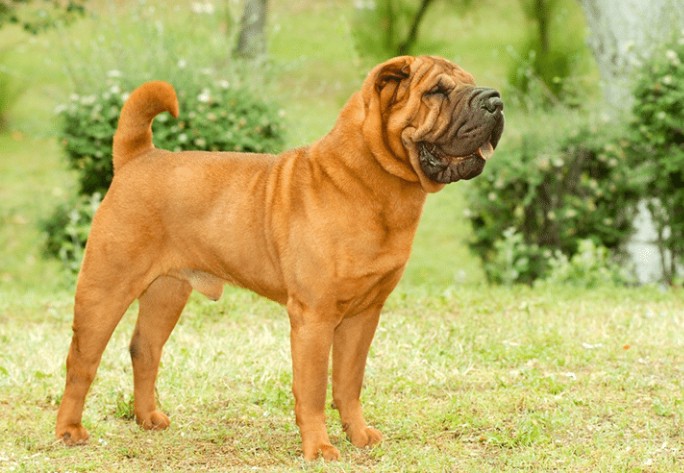
Teach, don’t control.
You don’t train a Shar Pei—you partner with one. Their mind is independent, their memory long. If you demand, they resist. But if you invite, they follow. With respect and clarity, they reveal how loyalty can be chosen—not commanded. 🧡
Allergic Conditions and Immune Dysregulation
Shar Peis suffer from allergies at 2.5 times the rate of the general dog population:
Atopic Dermatitis Statistics:
- Affects 7.7% of Shar Peis (vs 3.1% all breeds)
- Usually develops by age 3
- Progressive without treatment
- Significant quality of life impact
- Expensive to manage long-term
Common Allergens:
- Environmental: Pollen, dust mites, mold
- Food: As previously discussed
- Contact: Cleaning products, fabrics
- Insect: Flea saliva particularly problematic
Management Strategies:
Identification:
- Intradermal allergy testing
- Blood testing (less reliable)
- Elimination trials
- Environmental assessment
- Seasonal pattern recognition
Treatment Options:
- Immunotherapy: Custom allergy shots
- Apoquel: Daily oral medication
- Cytopoint: Monthly injection
- Steroids: Short-term only
- Antihistamines: Variable effectiveness
Supportive Care:
- Weekly medicated baths
- Omega-3 supplementation
- Environmental modifications
- HEPA air filtration
- Hypoallergenic bedding
Understanding and managing these health challenges is crucial for Shar Pei ownership 🧡
Attitude & Lifestyle
Urban vs. Rural Suitability
The Shar Pei’s adaptability to different living environments makes them surprisingly versatile companions, though each setting presents unique considerations for their well-being.
Urban Living Advantages:
- Apartment-friendly size: 45-60 pounds ideal for smaller spaces
- Low exercise requirements: Daily walks sufficient
- Generally quiet nature: Not prone to nuisance barking
- Clean habits: Naturally fastidious about elimination
- Minimal space needs: Content with cozy living areas
- Temperature control: Easier climate management indoors
Urban Challenges and Solutions:
- Noise sensitivity: Early exposure to city sounds crucial
- Elevator socialization: Practice calm behavior in confined spaces
- Limited off-leash options: Focus on leashed activities and mental stimulation
- Stranger encounters: More frequent, requiring solid training
- Heat island effect: Avoid midday walks on hot pavement
- Air quality: May exacerbate breathing issues in brachycephalic individuals
Rural Living Considerations:
Benefits:
- Natural territory for patrolling instincts
- Fewer stranger encounters reducing stress
- Better temperature options (shade, breeze)
- Space for independent exploration
- Quieter environment suits reserved nature
Challenges:
- Wildlife encounters may trigger prey drive
- Less socialization opportunities
- Fencing essential for safety
- Distance to veterinary specialists
- Seasonal parasite exposure higher
Ideal Living Setup (Urban or Rural):
- Secure, climate-controlled indoor space
- Access to private outdoor area (even small)
- Quiet retreat space away from activity
- Easy-clean flooring for fold care
- Multiple water stations
- Comfortable bedding supporting joints
Daily Routine, Calm Periods, and Engagement Windows
Shar Peis thrive on predictable routines that respect their natural activity patterns and need for downtime. Understanding their daily rhythms helps create harmony in your household.
Natural Activity Patterns:
- Morning: Moderate energy, good training time
- Midday: Lowest activity, prefer resting
- Evening: Second activity peak
- Night: Settle early, good watchdog hours
Ideal Daily Schedule:
Morning Routine (6:00-9:00 AM):
- Bathroom break and property patrol
- Breakfast with puzzle feeder
- 20-30 minute walk in cool weather
- Brief training session (5-10 minutes)
- Grooming and fold care
Midday Period (12:00-2:00 PM):
- Quiet rest time (respect this need)
- Brief bathroom break
- Mental enrichment activity
- Minimal interaction preferred
Evening Activities (5:00-8:00 PM):
- Second walk or backyard time
- Dinner (puzzle feeders recommended)
- Family bonding time
- Gentle play or training
- Final bathroom break
Attention and Engagement:
- Attention span: 10-15 minutes for focused activities
- Rest needs: 12-14 hours sleep daily
- Social time: 2-3 hours of gentle interaction
- Alone time: Equally important for well-being
- Mental stimulation: 30-45 minutes total daily
Owner Compatibility and Experience Requirements
The Shar Pei requires a specific type of owner to thrive – one who appreciates their unique personality and can meet their complex needs.
Ideal Owner Traits:
- Calm confidence: Leadership without domination
- Consistency: Clear rules and boundaries
- Patience: Understanding of independent nature
- Health commitment: Prepared for potential medical needs
- Financial stability: Health care can be expensive
- Emotional maturity: Not reactive to aloofness
- Time availability: For grooming and care
- Respect for independence: Not seeking velcro dog
Experience Level Considerations:
- Best for experienced dog owners
- First-time owners need extensive support
- Previous breed experience helpful
- Understanding of guardian breeds beneficial
- Willingness to continue education essential
Not Recommended For:
- First-time dog owners without mentor support
- Highly social households with frequent visitors
- Families with very young children (under 8)
- Those seeking highly trainable/obedient breeds
- People unable to commit to health management
- Anyone expecting immediate affection
- Households wanting party-friendly dogs
- Those with limited financial resources
Lifestyle Compatibility:
- Best match: Quiet, predictable households
- Work schedule: Can handle alone time
- Social life: Limited home entertaining
- Activity level: Moderate, not athletic
- Living situation: Stable, few moves
- Other pets: Careful introduction needed

Climate Tolerance and Skin Management
The Shar Pei’s unique physiology creates specific climate sensitivities requiring careful environmental management year-round.
Temperature Guidelines:
- Optimal range: 60-75°F (15-24°C)
- Humidity: 30-50% ideal for skin health
- Heat stress risk: Above 80°F (27°C)
- Cold tolerance: Limited below 40°F (4°C)
- Extreme danger: Above 85°F (29°C) with humidity
Heat Management Strategies:
Environmental Controls:
- Air conditioning essential in warm climates
- Fans for air circulation
- Cooling mats for resting
- Elevated beds for airflow
- Shade access mandatory
Activity Modifications:
- Early morning walks (before 8 AM)
- Evening exercise after sunset
- Limit to 10-15 minutes in heat
- Avoid hot pavement
- Indoor activities during peak heat
Cooling Techniques:
- Cool (not cold) water for drinking
- Cooling vests for necessary outings
- Frozen treats for enrichment
- Cool water fold cleaning
- Never shave the coat
Cold Weather Adaptations:
- Shorter bathroom breaks
- Protective clothing if needed
- Indoor exercise alternatives
- Heated bedding for seniors
- Monitor for shivering
Seasonal Skin Care:
Summer Challenges:
- Increased fold moisture
- Higher infection risk
- More frequent cleaning needed
- Allergen exposure peaks
- Swimming precautions required
Winter Considerations:
- Dry air causing skin issues
- Salt/chemical paw exposure
- Static electricity discomfort
- Heating drying out folds
- Humidifier benefits
Travel, Routine Disruption, and Boarding Risks
Shar Peis typically find travel and routine changes stressful, requiring careful planning to minimize anxiety and health risks.
Travel Stress Factors:
- Territorial confusion in new places
- Increased stranger exposure
- Routine disruption effects
- Temperature control challenges
- Unfamiliar surfaces/sounds
Travel Preparation Protocol:
Pre-Travel Training:
- Gradual car conditioning from puppyhood
- Crate training for secure transport
- Practice overnight stays locally
- Positive associations with travel gear
- Short trips building to longer
Packing Essentials:
- Familiar bedding with home scents
- Regular food (plus extra)
- Fold care supplies
- Medications (including emergency)
- Comfort items
- Temperature control aids
During Travel:
- Maintain feeding schedule
- Regular bathroom breaks
- Climate control priority
- Minimize stranger interaction
- Secure rest areas
Boarding Challenges and Alternatives:
Traditional Boarding Risks:
- Separation anxiety from primary caregiver
- Difficulty trusting new handlers
- Increased infection risk in kennels
- Stress-induced FSF episodes
- May become withdrawn or aggressive
- Feeding disruption common
Boarding Preparation (If Necessary):
- Visit facility multiple times prior
- Leave detailed care instructions
- Provide all medications
- Include comfort items
- Specify handling preferences
- Emergency contact information
Better Alternatives:
- In-home pet sitting: Maintains territory
- Trusted friend/family: Familiar faces
- Professional house sitters: Vetted services
- Travel together: When possible
- Boarding with vet: Medical supervision
Post-Travel Recovery:
- Expect adjustment period
- Resume normal routine immediately
- Monitor for stress signs
- Extra fold care attention
- Watch for FSF episodes
- Patience with behavior changes
Living with a Shar Pei means adapting your lifestyle to their needs, but the reward is a deeply loyal, dignified companion 🐾
Performance & Activities
Working Heritage and Modern Applications
While Shar Peis were originally multipurpose farm dogs in China, serving as hunters, herders, and guardians, their modern role has shifted primarily to companionship. However, understanding their working heritage helps channel their natural abilities appropriately.
Historical Working Roles:
- Hunting: Wild boar and other game
- Guarding: Property and livestock protection
- Herding: Moving livestock on farms
- Fighting: Unfortunately used in dog fighting
- Vermin control: Protecting grain stores
Natural Abilities Still Present:
- Strong territorial awareness
- Independent problem-solving
- Moderate prey drive
- Natural suspicion of strangers
- Physical courage when needed
- Loyalty to handler
Modern Activity Applications:
Therapy Work Potential:
- Calm demeanor suits some settings
- Not overly excitable
- Requires extensive socialization
- Best in predictable environments
- One-on-one interactions preferred
- Not ideal for most therapy work
Nose Work/Scenting:
- Natural hunting instincts applicable
- Independent search style
- Builds confidence
- Low-impact activity
- Suitable for all ages
- Minimal equipment needed
Barn Hunt:
- Taps into vermin hunting heritage
- Safe, controlled environment
- Builds problem-solving skills
- Time-limited reducing overheating
- Size-appropriate tunnels available
Exercise Requirements and Physical Limitations
Shar Peis require moderate exercise tailored to their physical limitations and brachycephalic features in many individuals.
Daily Exercise Needs by Age:
Puppy (2-12 months):
- 5 minutes per month of age, twice daily
- Free play in safe areas
- Avoid jumping and stairs
- Mental stimulation priority
- Multiple short sessions
Adult (1-7 years):
- 30-60 minutes total daily
- Split into 2-3 sessions
- Mix of walking and play
- Avoid intense exercise
- Weather-dependent adjustments
Senior (7+ years):
- 20-40 minutes gentle exercise
- Shorter, frequent walks
- Swimming if available
- Maintain muscle mass
- Adjust for arthritis
Exercise Limitations:
- Heat intolerance: No exercise above 75°F
- Breathing issues: Avoid strenuous activity
- Joint concerns: Low-impact preferred
- Skin folds: Check after activity
- Stamina: Built for spurts, not endurance
Appropriate Exercise Types:
- Leashed walks: Primary exercise
- Backyard patrol: Natural behavior
- Hide and seek: Mental and physical
- Gentle fetch: Short sessions
- Swimming: Excellent if tolerated
- Indoor games: Weather alternatives
Exercise Safety Protocol:
- Always check temperature first
- Bring water on all outings
- Watch for overheating signs
- Allow rest as needed
- Post-exercise fold check
- Gradual conditioning for any new activity
Mental Stimulation and Enrichment Activities
Mental exercise is equally important as physical activity for Shar Peis, helping prevent boredom and associated behavioral issues.
Daily Mental Enrichment Schedule:
- Morning: Puzzle feeder breakfast (15 minutes)
- Midday: Scent game or hide toys (10 minutes)
- Afternoon: Training session (5-10 minutes)
- Evening: Interactive toy time (15 minutes)
Enrichment Categories:
Food-Based Enrichment:
- Puzzle feeders (varying difficulty)
- Snuffle mats for meals
- Frozen Kong toys
- Hide kibble around house
- Lick mats with safe spreads
Sensory Enrichment:
- Different textures to explore
- Safe scents to investigate
- Rotate toys weekly
- New objects (supervised)
- Environmental sounds
Social Enrichment (Carefully Managed):
- Controlled playdates with known dogs
- Watching outdoor activity from window
- Car rides to new places
- Visiting pet-friendly stores off-peak
- Video calls with distant family
Training as Enrichment:
- New trick every month
- Shaping games
- Platform training
- Targeting exercises
- Casual obedience practice
Breed-Appropriate Sports and Competitions
While Shar Peis aren’t typical sport dogs, several activities suit their temperament and abilities:
Conformation Showing:
- Celebrates breed type
- Requires extensive socialization
- Grooming intensive
- Travel commitment
- Not for pet-quality dogs
Rally Obedience:
- Less formal than traditional obedience
- Works with independent nature
- Handler can encourage
- Shorter courses
- Building partnership
Trick Dog Titles:
- Work at own pace
- Video submissions possible
- Builds engagement
- Fun for both
- Progressive levels
Canine Good Citizen:
- Practical skills focus
- Achievable goals
- Real-world applications
- Confidence building
- Foundation for therapy work
Activity Considerations:
- Choose based on individual dog
- Respect physical limitations
- Keep sessions positive
- Don’t force participation
- Celebrate small wins
Senior Activity Modifications
As Shar Peis age, their activity needs change but remain important for physical and mental health:
Age-Related Changes:
- Decreased stamina
- Joint stiffness
- Reduced heat tolerance
- Vision/hearing changes
- Cognitive slowing
Modified Activities:
- Sniff walks: Pace set by dog
- Gentle swimming: If accessible
- Balance exercises: Maintain muscle
- Simple puzzles: Cognitive function
- Massage sessions: Circulation and bonding
Senior Enrichment Ideas:
- Raised puzzle feeders
- Softer toys for comfort
- Predictable routines
- Gentle grooming sessions
- Quiet companionship
Keeping your Shar Pei appropriately active throughout life supports their physical and mental well-being 🧡
Health Concerns
Comprehensive Health Screening Recommendations
Proactive health screening is essential for Shar Peis given their predisposition to multiple genetic conditions. Early detection significantly improves outcomes and quality of life.
Puppy Health Screening (8 weeks – 1 year):
- Initial veterinary exam: Comprehensive physical
- Entropion evaluation: May need early tacking
- Hip/elbow preliminary x-rays: At 6 months
- Baseline blood work: Before 1 year
- Urinalysis: Check for early proteinuria
- Temperature log: Establish normal range
Annual Adult Screening (1-7 years):
- Complete physical examination
- Blood chemistry panel: Kidney/liver function
- Urinalysis: Protein levels critical
- Thyroid panel: Hypothyroidism risk
- Blood pressure: Kidney disease indicator
- Skin fold assessment: Document changes
Senior Screening (7+ years):
- Bi-annual examinations
- Expanded blood work: Include clotting times
- Chest x-rays: Heart/lung evaluation
- Abdominal ultrasound: Organ assessment
- Eye examination: Glaucoma screening
- Cognitive assessment: Mental changes
Emergency Preparedness for Shar Pei Owners
Given their health susceptibilities, Shar Pei owners must be prepared for emergencies:
FSF Episode Management Kit:
- Digital thermometer (rectal)
- Temperature log book
- Prescribed medications
- Cooling supplies
- Emergency vet contact
- Episode documentation forms
Warning Signs Requiring Immediate Care:
- Temperature above 105°F (40.5°C)
- Difficulty breathing
- Pale or blue gums
- Collapse or extreme weakness
- Severe abdominal pain
- Persistent vomiting
- Eye injuries or sudden blindness
First Aid Essentials:
- Antiseptic fold cleaner
- Sterile saline solution
- Non-stick gauze pads
- Self-adhering wrap
- Instant cold packs
- Benadryl (vet-approved dose)
Preventive Care Strategies
Prevention is always preferable to treatment, especially for Shar Peis:
Daily Prevention Routine:
- Morning fold inspection
- Temperature check if indicated
- Observe urination habits
- Monitor appetite and energy
- Evening fold cleaning
- Document any changes
Environmental Prevention:
- Climate control maintenance
- Hypoallergenic bedding
- HEPA air filtration
- Humidifier/dehumidifier use
- Non-slip flooring
- Stress reduction measures
Nutritional Prevention:
- High-quality diet
- Appropriate supplements
- Weight management
- Adequate hydration
- Avoid known triggers
- Regular feeding schedule
Building Your Veterinary Team
Shar Peis benefit from a comprehensive veterinary team familiar with breed-specific issues:
Primary Veterinarian Qualities:
- Shar Pei experience preferred
- Proactive approach
- Available for emergencies
- Good communication skills
- Willing to research breed issues
Specialist Referrals:
- Veterinary dermatologist: For chronic skin issues
- Ophthalmologist: Entropion and eye problems
- Internal medicine: FSF and kidney disease
- Surgeon: If fold reduction needed
- Behaviorist: For anxiety issues
Emergency Preparedness:
- 24-hour emergency clinic identified
- After-hours protocol established
- Medical records accessible
- Insurance information ready
- Transport plan prepared
Senior Care
Recognizing and Supporting the Aging Shar Pei
Shar Peis typically enter their senior years around age 7-8, though individual variation exists. Understanding age-related changes helps you provide appropriate support during their golden years.
Physical Aging Signs:
- Graying muzzle and face (may be subtle in cream dogs)
- Decreased muscle mass despite good appetite
- Stiffness after rest, especially mornings
- Slower movement and reduced stamina
- Cloudy eyes or vision changes
- Selective hearing (or actual hearing loss)
- Changes in skin fold condition
Behavioral Changes:
- Increased sleep (up to 16-18 hours)
- Less interest in play or walks
- More selective about interactions
- Possible confusion in familiar places
- Changes in bathroom habits
- Increased vocalization at night
- Stronger attachment to routine
Cognitive Changes to Monitor:
- Disorientation in familiar spaces
- Changes in sleep-wake cycles
- Altered interaction with family
- House training lapses
- Staring at walls or corners
- Repetitive behaviors
- Anxiety in known situations
Adapting Care for Senior Needs
Modified Grooming Routine:
- Gentler handling of arthritic joints
- Warmer water for comfort
- Shorter grooming sessions
- Extra attention to fold care
- Softer brushes for sensitive skin
- More frequent nail trims
Comfort Modifications:
- Orthopedic bedding with easy access
- Ramps for car or furniture
- Non-slip rugs on smooth floors
- Raised food and water bowls
- Night lights for navigation
- Easy-access litter areas
Nutritional Adjustments:
- Senior formula foods if appropriate
- Increased omega-3 supplementation
- Joint support supplements
- Smaller, more frequent meals
- Warmed food for appeal
- Monitor weight carefully
Managing Age-Related Health Issues
Common Senior Shar Pei Conditions:
- Arthritis and mobility issues
- Kidney function decline
- Vision problems (cataracts, glaucoma)
- Cognitive dysfunction syndrome
- Dental disease
- Thyroid imbalances
Pain Management Options:
- NSAIDs (with kidney monitoring)
- Gabapentin for nerve pain
- Adequan injections
- Acupuncture
- Physical therapy
- Massage therapy
Quality of Life Assessment:
- Appetite and eating ability
- Mobility and pain levels
- Bathroom habit control
- Interest in surroundings
- Interaction with family
- More good days than bad
End-of-Life Considerations
Making end-of-life decisions for your Shar Pei requires honest assessment and compassion:
Quality of Life Indicators:
- Chronic pain despite management
- Loss of bathroom control
- Inability to stand or walk
- Refusal to eat or drink
- Labored breathing at rest
- No interest in surroundings
Preparing for Goodbye:
- Discuss options with veterinarian
- Consider in-home euthanasia
- Plan memorial preferences
- Prepare family members
- Allow proper goodbye time
- Honor your dog’s dignity
Grief Support:
- Pet loss hotlines available
- Support groups exist
- Memorialize your companion
- Allow grieving process
- Consider counseling if needed
- Honor the bond you shared
Conclusion
The Shar Pei is truly a breed unlike any other – a fascinating combination of ancient heritage and modern companion. Their wrinkled faces may draw initial attention, but it’s their complex personality that captures hearts. These dignified, independent dogs offer a unique companionship experience that differs markedly from more demonstrative breeds.
Living successfully with a Shar Pei requires understanding and accepting their nature rather than trying to change it. They are not Golden Retrievers in wrinkled suits – they are discerning, loyal companions who choose their people carefully and love them deeply, if quietly. Their aloofness with strangers isn’t a flaw to be fixed but a characteristic to be managed and respected.
Key Takeaways for Prospective Owners:
- Not suitable for first-time owners without extensive support and commitment to learning
- Require significant financial commitment for potential health care needs
- Need patient, positive training approaches that respect their intelligence
- Benefit from calm, stable environments with predictable routines
- Can adapt to various living situations with proper care and climate control
- Form deep bonds with understanding owners who appreciate their unique nature
The health challenges facing the breed cannot be minimized – FSF, skin issues, and eye problems require vigilant management and financial preparedness. However, for those willing to commit to their care, Shar Peis offer rewards that their devoted owners describe as incomparable.
If you’re drawn to the Shar Pei, take time to meet the breed, speak with experienced owners, and honestly assess your lifestyle and capabilities. These are not easy dogs, but for the right owner, they are extraordinary companions who bring dignity, loyalty, and their own special brand of affection to your life.
The ancient Chinese prized the Shar Pei for their versatility and loyalty. Today’s Shar Pei owners prize them for the same qualities, wrapped in a unique package that requires dedication but rewards it with unwavering devotion. For those willing to invest the time, patience, and resources, the Shar Pei offers a uniquely rewarding companionship experience unlike any other breed 🐾


